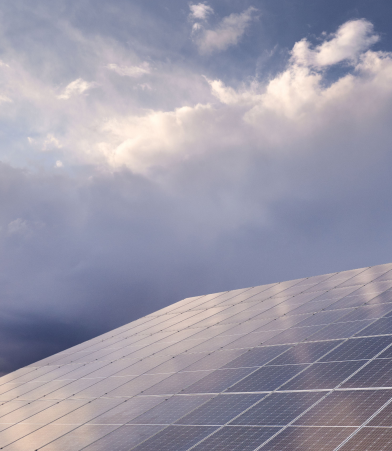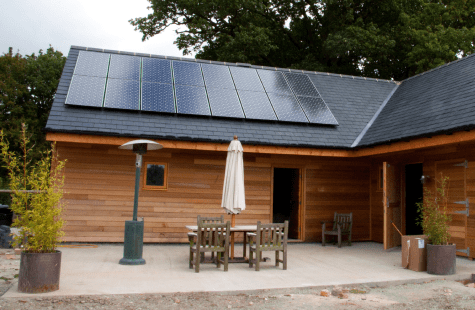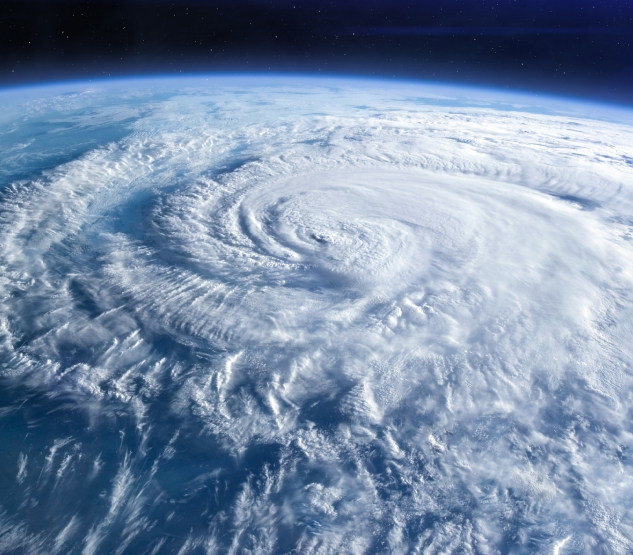

Your solar system’s durability may surprise you.
If you’re thinking about going solar or have already done so, you may wonder how solar panels will fare in less-than-fair weather — especially if you live in a region prone to hurricanes and hailstorms.
Good news: solar panels are more durable than you may think. In fact, a look back at some of our nation’s most catastrophic storms in recent history illustrates this point.
- Hurricane Sandy: New Jersey has one of the highest concentrations of single-family homes in America. So when Hurricane Sandy made landfall in 2012, thousands of solar customers prepared for the worst. Although the state was hit hard, residents reported almost no damage to their home solar systems.*
- Hurricane Maria: Most solar systems even withstood the havoc Hurricane Maria caused in Puerto Rico in 2017. Although the massive storm slammed into the island with winds exceeding 150 mph, a VA hospital in San Juan — one of the most heavily affected areas — made headlines as its commercial solar system remained operating at 100%.*
What kept these systems intact? In both cases, the solar panels avoided hurricane damage because the racking and anchoring systems were strong enough to withstand extreme wind.
As you might imagine, wind, rain and hail are typically the biggest concerns when it comes to hurricane damage. Let’s take a deeper dive into these three phenomena to understand their effect on solar panels.
Do Solar Panels Work When It’s Raining?
During a hurricane, it’s normal to worry about rain and flooding. But if you think your solar panels won’t work in a storm, think again:
- Solar panels are waterproof and, as a result, are usually able to continue generating some amount of energy when it rains (although production will take a major hit).
- Because photovoltaic (PV) panels work by converting both direct and indirect sunlight into energy, they can still produce anywhere from 10% to 25% of their optimal capacity on cloudy and rainy days.
- Rain can actually be good for solar panels. It’s not unusual for their tempered glass tops to absorb sunlight more efficiently after a storm, as water washes away dust, dirt, pollen and other particles that build up over time.

Learn more about solar performance on rainy and cloudy days.
Effects of Wind on Your Solar Panels

Wind is another factor that may cause damage if your solar system in a hurricane. High winds blowing from all directions can wreak havoc on even the most well-built homes and durable rooftops.
Since the panels are positioned slightly above your roof’s surface, uplift may be a concern. Uplift occurs when the wind forces its way between your roof and solar panels, causing the hardware and modules to lift up or come loose. With proper installation, your solar panels will be firmly secured to your home with enough attachment points to generally resist wind uplift.
Some states and municipalities — namely those vulnerable to extreme wind and weather — tend to have their own standards in place. For instance:
- Florida building code requires solar panels to contain enough attachment points to resist uplift, while sustaining winds of 160 mph and 170+ mph in exposed coastal areas, like Marco Island.*
- In Texas, all rooftop racking must be bolted to rafters (not decking) to ensure durability. Solar systems in the Lone Star State must pass a standard set of tests and are built to withstand wind speeds of up to 125 mph.*
Can Hail Damage Solar Panels?

Have you ever left your car out in a hailstorm only to find it had more dimples than a golf ball afterward? Then you know firsthand the damage these specks of icy rain can cause.
Fortunately, when it comes to hail, most solar panels are certified to stand up against one-inch hail falling at approximately 50 mph.* When rare damage from hail does occur, it’s usually caused by concentrated impact in small areas.
A hailstorm in the Denver Metro Area some years ago provided the National Renewable Energy Laboratory (NREL) with the perfect opportunity to test the durability of the more than 3,000 solar panels on its rooftops. As the Mile-High City was pelted with baseball-sized hail, only one solar panel was damaged — a true testament to the fact that today’s panels are built to last.*
Hurricane Damage Prevention for Your Solar System

Remember, solar panels are continuously exposed to inclement weather. They’re designed to handle everything from rain and sleet to snow and hail, even hurricanes.
Before your system is even installed, your roof will be inspected to ensure whether it can hold your system safely in place. Any improvements, such as a necessary roof replacement, will be recommended prior to the install.
To maximize the chances of your solar array withstanding a hurricane, your installer may:
- Use ballasted or penetrating anchors to reduce the chance of lateral movement
- Utilize flexible racking that will enable panels to bend, not break, in gale-force winds
- Incorporate roof attachments to ensure solar panels are secured to the home’s rafters
- Use high-quality panels, designed for hurricane prone areas that can handle flying debris
- Include hurricane clips or other support brackets to provide more durability
If severe storms frequent your area, it’s important to understand how your system is insured. This depends on who owns it.
- When you go solar or opt for a solar plus battery system with Sunnova and finance it with a lease or power purchase agreement (PPA), that means we own the system and will provide insurance to cover any damage caused by a hurricane or hailstorm.
- If you paid cash or financed your solar or solar plus battery system with a loan, then you own the system and you’ll be responsible for covering it via your homeowner’s insurance.

There is one exception: Puerto Rico. For homeowners on the Island of Enchantment who opt for a loan, Sunnova will provide insurance for damage caused by tropical weather events and earthquakes, should your homeowner’s policy not cover it.
All of our residential solar and solar plus storage systems come with our 25-year Sunnova Protect® Platinum Plan. Providing hassle-free repairs, this protection plan covers the equipment and labor to fix or replace any (or all) system components, whether your insurance company pays for it or we do.

Solar panels aren’t cheap, and for good reason — they’re manufactured to an extremely high quality. In turn, high-end solar panels can withstand almost any environmental condition.
The solar industry has a vested interest in making sure installations are over-engineered so that there aren’t issues with panels tearing pieces off of a rooftop during gale-force winds.
The weather conditions severe enough to damage your system are also likely strong enough to destroy your entire home. So, unless you are one of the unlucky ones who experiences one of the worst hurricanes in history, don’t fret about your system suffering damage during an extreme storm.